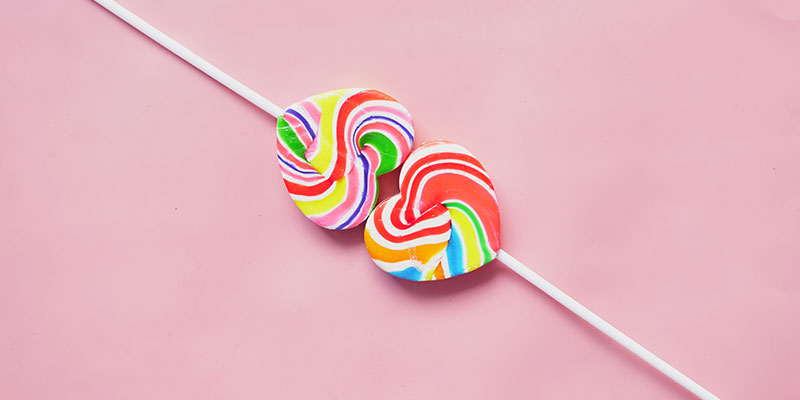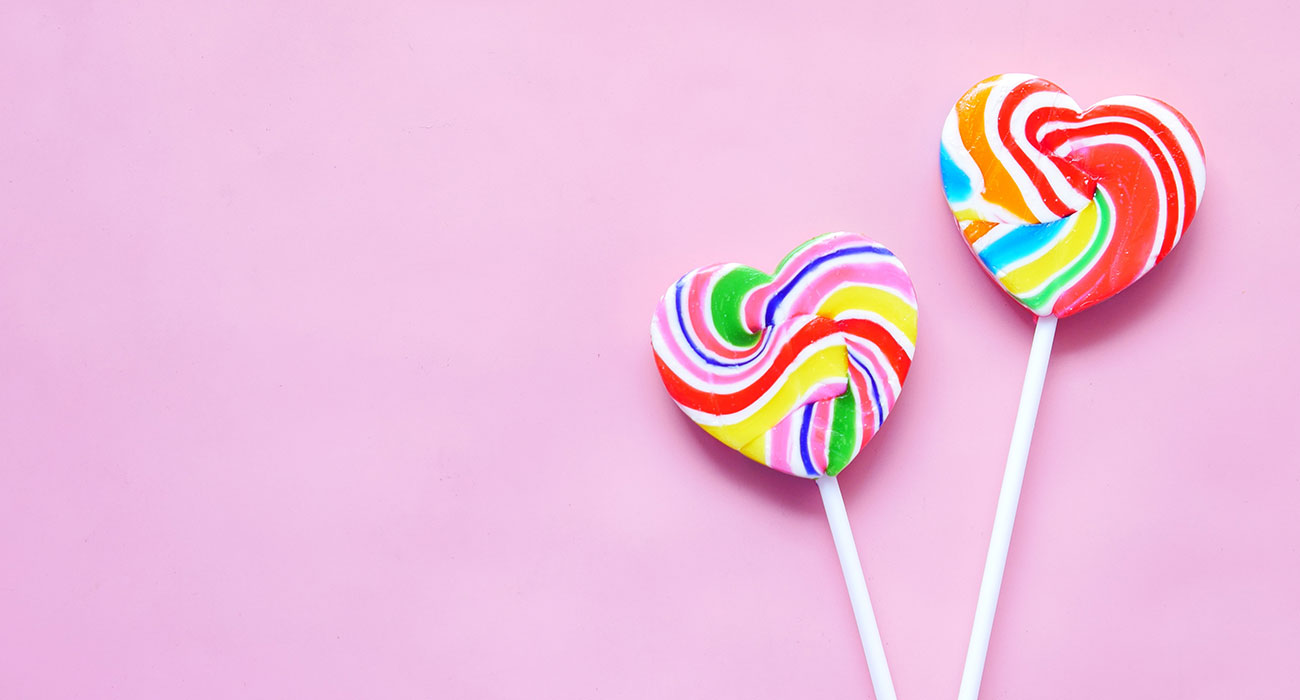All about sexual orientation, LGBTIQA+ and gender
Image: Unsplash
You probably already know straight, gay, bisexual and transgender, but what does it mean if someone is asexual, cisgender, pansexual, genderfluid or LGBTIQA+? We looked it up for you.
Handy, such an overview or as a supplement to your child’s sex education. Sit back, we’ll dive right in.
Contents
Let’s talk about gender
No, not a typo. Sex is your gender and all the physical characteristics that come with it. Your gender is determined at birth and will then appear on your birth certificate and identification documents. Usually this comes down to male or female.
There are also people whose sex characteristics are not clearly male or female and are just different from most people. This is called intersex. For example, someone who is intersex has a vulva and a large clitoris that resembles a penis. Or someone was born with an immature penis and a uterus. There are also intersex people who have the mature sex characteristics of one sex, but a mix of female and male hormones or genes. Usually this is not visible from the outside. In the past, the sex of the intersex child was determined shortly after birth. Surgery gave these babies a full vagina or penis. At the moment, this often means waiting for an intersex child to decide for themselves.
When your gender does not match your gender identification, and this is not temporary, we call this transgender. More on this later.
Sexual orientation and gender
Chances are you already know this one: sexual orientation means who you like. This is about your romantic and sexual attraction. For example, do you like men, women, gender neutral or all? And how do you deal with these feelings? Do you need sex or not? Do you fall in love at all or do you care more about friendship?
Gender (identification) is how you feel and identify. This runs on a scale of feminine, masculine and genderless. Do you feel more macho or femme? The combinations are endless, because everyone has a different interpretation of these terms. How someone feels about their gender can change, but also stay the same throughout life. In addition, how others deal with gender roles can also affect your gender identification or the extent to which you can express it.
And that brings us to… gender expression. This is what you express. Think, for example, of your clothing, voice, make-up, behavior or hairstyle to show your gender identification. This expression can happen consciously or unconsciously.
What exactly is LGBTIQA+?
Don’t worry, you won’t be quizzed later on what each letter stands for. LGBTIQA+ is the abbreviation for Lesbian, Gay, Bisexual, Transgender, Intersex, Queer/Questioning, Asexual/Aromantic and anything that can fit with this (the +).
It’s an umbrella term used for anyone who is different from straight or cisgender in terms of sexual orientation, gender, or gender (more on this later).

Sexual Orientations
Time to talk about love. Who do you like, how do you deal with that and what is the role of sex in your life? Here we see the LHB and A of the LHBTIQA+.
Heterosexual
A heterosexual is romantically and/or sexually attracted exclusively to the opposite sex or gender. For example, a woman who is attracted to a man.
Gay/Gay/Lesbian
‘Gay’ means ‘same’, so guess what this label stands for. If you like someone of your own gender, we call it homosexual. The term actually applies to everyone, but is mainly used with boys and men. You can also call yourself gay (meaning: happy) or, if you like a different gender, bisexual or pansexual.
If you are a woman, you can also use lesbian. This word comes from the Greek island of Lesbos, where the poet Sappho comes from. She wrote in her poems about her love for women.
Bisexual/Pansexual
If you like both men and women, you can call yourself bisexual. Some bisexual people are not only attracted to men and/or women, but also to people with different gender identities. ‘Bi’ means two, but is also seen by many people as ‘two or more’. There are also individuals who choose to use pansexual instead of bisexual. Pan means ‘all’.
Asexual/Aromantic
Do you experience little or no sexual attraction to other people and/or do you not feel the need for sexual contact with another person? You may be asexual. You do not experience a sexual attraction to another person, but you may experience a romantic one. Some asexual people do have sex with themselves or sometimes with someone else. Someone who is asexual can be sexually aroused, but does not feel the need for sex.
When you’re not experiencing romantic attraction, you may be aromatic. Aromantic people, for example, do not fall in love or have no desire for a romantic relationship with another person. Someone who is aromantic can still experience sexual attraction to another person, but there are also people who are both asexual and aromantic.
Also read: Tips from a pedagogue: this is how you give sex education to your child >
Gender Identifiers
There are a lot of gender identifiers, but to keep the overview we’ve looked up some of the most common labels for you.
cisgender
In a cisgender person, the sex and gender identity match. For example, you were born as a boy and you feel that way. Cis means ‘on this side’. Cisgender is the opposite of transgender.
transgender
When your sex does not match your gender, and this is not temporary, we call this transgender. For example, your gender at birth is girl/woman, but your gender is boy/man. ‘Trans’ means ‘over it’ or ‘on the other side’.
A transgender person may experience gender dysphoria (a strong sense of dissatisfaction with one’s innate sex), but this may not always be the case. Some transgender people opt for treatment with hormones or surgery so that their bodies are more in line with their gender. Others choose to live (possibly partly) as their gender without interventions or to go through life gender neutral.
Non-binary/Gender Neutral/Genderless
Also sometimes referred to as agender, gender non-conforming, genderqueer or genderfluid, this label indicates that the person does not feel at home in the male/female dichotomy. Non-binary is used as an umbrella term for all genders outside of these categories.
Non-binary people often use other pronouns, such as them/their or that/their. The form of address a non-binary person uses can differ. Not sure? Just ask.
The Q in LGBTIQA+
Do you have an open, broad gender and/or sexual identity? Then you can also go for queer. Queer does not have a good Dutch translation, but actually means ‘strange’. Often people call themselves queer when they do not assign themselves a fixed gender and/or sexual identity, or reject it. Queer is also sometimes used to name anything that is not cisgender and/or heterosexual.
Queer used to be used as a swear word, but the LGBTIQA+ community is increasingly using it in a positive sense. Note that not everyone finds it a nice term because of this history.
Not sure yet? Sometimes the Q in LGBTIQA+ is also referred to as ‘questioning’: not being sure.
Talking to your child about gender, sex and sexual orientation
There are various teaching packages and tips available online to introduce your child to this theme in a playful way. For example, talk about gender roles together: what is typically girlish or boyish? Is that really the case? Or explain what gender, sex and sexual orientation is on the basis of the ‘gender cake’. Create a question box or watch videos about the subject together, such as this one in which Thorn de Vries and Mandy Woelkens explain it in great detail.
Do you suspect that your child is LGBTIQA+? Or did it come as a surprise and are you still getting used to the idea? Above all, keep talking, listening and supporting your child. For more tips you can check everyoneisanders.nl
Sources: Sexueleisering.nl, UMCG, Sense.info/nl, COC Nederland and Everyoneisanders.nl
Receive Kek Mama every month with a discount and shipped for free to your doorstep! Subscribe now and pay only € 4.19 per edition.



